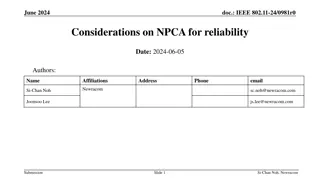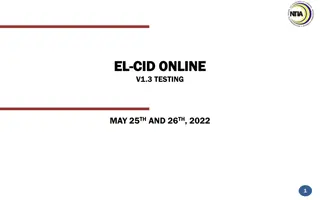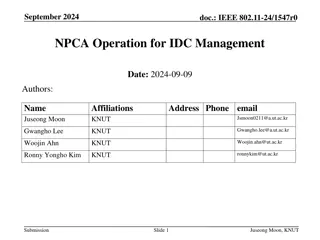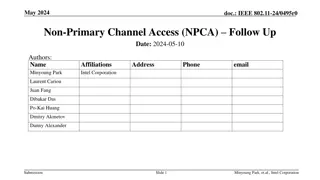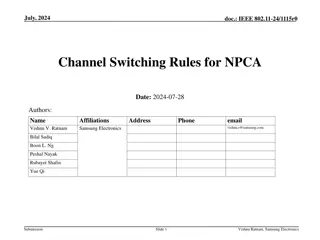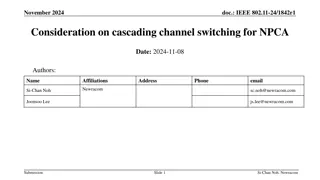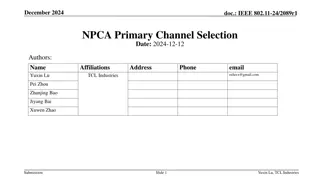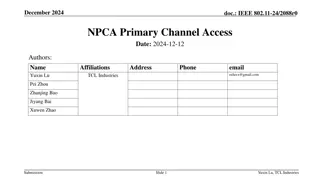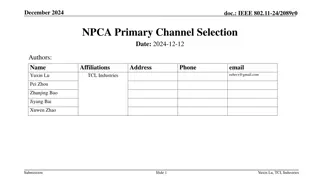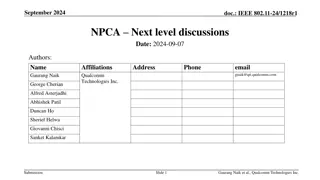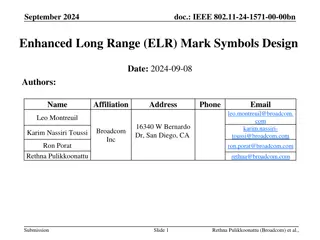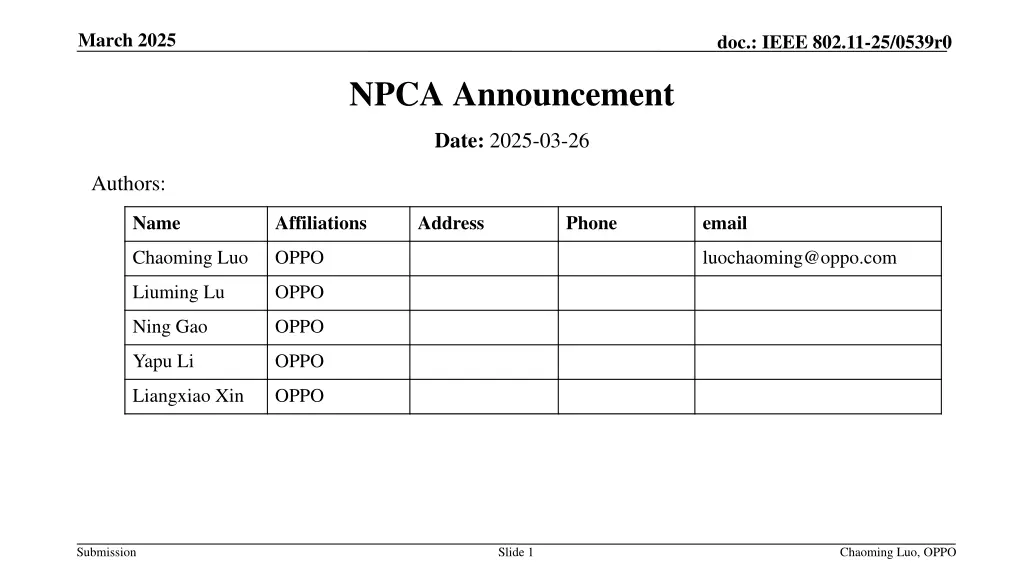
Proposed Resolution Mechanism for CID 1773 Problem in IEEE 802.11-25/0539r0 NPCA
"This document discusses a proposed mechanism to address the CID 1773 issue in the IEEE 802.11 standard, specifically focusing on resolving the different view problem in NPCA procedures related to OBSS transmissions. The proposal suggests using short signals during SIFS to facilitate AP communication with STAs for channel switching. Various design options for the short signal are explored to optimize efficiency and minimize disruption during transmission. Overall, this proposal aims to enhance the NPCA procedure effectiveness and reduce potential conflicts."
Download Presentation

Please find below an Image/Link to download the presentation.
The content on the website is provided AS IS for your information and personal use only. It may not be sold, licensed, or shared on other websites without obtaining consent from the author. If you encounter any issues during the download, it is possible that the publisher has removed the file from their server.
You are allowed to download the files provided on this website for personal or commercial use, subject to the condition that they are used lawfully. All files are the property of their respective owners.
The content on the website is provided AS IS for your information and personal use only. It may not be sold, licensed, or shared on other websites without obtaining consent from the author.
E N D
Presentation Transcript
March 2025 doc.: IEEE 802.11-25/0539r0 NPCA Announcement Date: 2025-03-26 Authors: Name Affiliations Address Phone email Chaoming Luo OPPO luochaoming@oppo.com Liuming Lu OPPO Ning Gao OPPO Yapu Li OPPO Liangxiao Xin OPPO Submission Slide 1 Chaoming Luo, OPPO
March 2025 doc.: IEEE 802.11-25/0539r0 Abstract Proposes a mechanism to resolve CID 1773. CID Clause Comment 1773 37.10 In order to solve different view problem when observing OBSS transmission in NPCA procedure, the AP observing the OBSS transmission would be better to send a short signal during the SIFS to inform STAs in the BSS to switch to NPCA P-channel. Submission Slide 2 Chaoming Luo, OPPO
March 2025 doc.: IEEE 802.11-25/0539r0 Proposal As proposed in the comment, when AP1 detects AP2 s transmission of a control frame exchange on the BSS primary channel, AP1 may send a short signal during the SIFS to announce NPCA switch Non-AP STAs associated with AP1 may switch to NPCA primary channel upon the receipt of this short signal. AP1 sends a short signal to announce switching to NPCA non-primary channel; The short signal may be Tx with limited TX power; ICF Basic TF SIFS ICF NAV of BSS2 AP1 SIFS UL Data SIFS ICR NAV of BSS2 STA1 SIFS SIFS ICR UL Data NAV of BSS2 STA2 SIFS SIFS RTS DL Data DL Data AP2 SIFS SIFS Ack / BA Ack / BA SIFS CTS STA3 Submission Slide 3 Chaoming Luo, OPPO
March 2025 doc.: IEEE 802.11-25/0539r0 Design of The Short Signal Option 1: The short signal may be a 2x LTF symbol (6.4 us) with 1.6 us GI which takes 8 us It should be more than or equal to 4 us considering minimum receiver detecting time. [1] It should be less than a SIFS (e.g., 16 us) to minimize the impact to the ongoing OBSS transmission As stated in baseline clause 10.3.2.11: If an RTS/CTS exchange is used, the PPDU containing an individually addressed Data or Management frame shall be transmitted starting one SIFS after the end of the CTS frame. No regard is given to the busy or idle status of the medium when transmitting this PSDU. The transmission of the short signal obeys the regulatory. ([2], Short Control Signalling Transmissions) The short signal may be transmitted on a dedicated RU AP1 and AP2 use different RUs to identify themselves to their associated STAs. AP1 and AP2 can negotiate the RUs to avoid conflict. Further random phase rotation could be applied to the LTF symbol Alternate way to reduce conflict between APs To mitigate the possible replay attack. Option 2: The short signal may be a orthogonal code division multiplexing (CDM) sequence, e.g., Zadoff-Chu sequence. Detail design TBD Submission Slide 4 Chaoming Luo, OPPO
March 2025 doc.: IEEE 802.11-25/0539r0 Summary The method can alleviate the different view problem of NPCA procedure. Detail design can be further discussed. Submission Slide 5 Chaoming Luo, OPPO
March 2025 doc.: IEEE 802.11-25/0539r0 Straw Poll Do you support to include the following text into the 11bn SFD? An NPCA AP may send a short signal during the SIFS after the OBSS control frame exchange on the BSS primary channel to announce its switching to NPCA primary channel? Detailed design of the short signal is TBD Submission Slide 6 Chaoming Luo, OPPO
March 2025 doc.: IEEE 802.11-25/0539r0 References [1] 11-24-0284-02-00bn-low-latency-low-collision-low-power-uhr-medium-access [2] EN 301 893v2.1.1 Submission Slide 7 Chaoming Luo, OPPO







